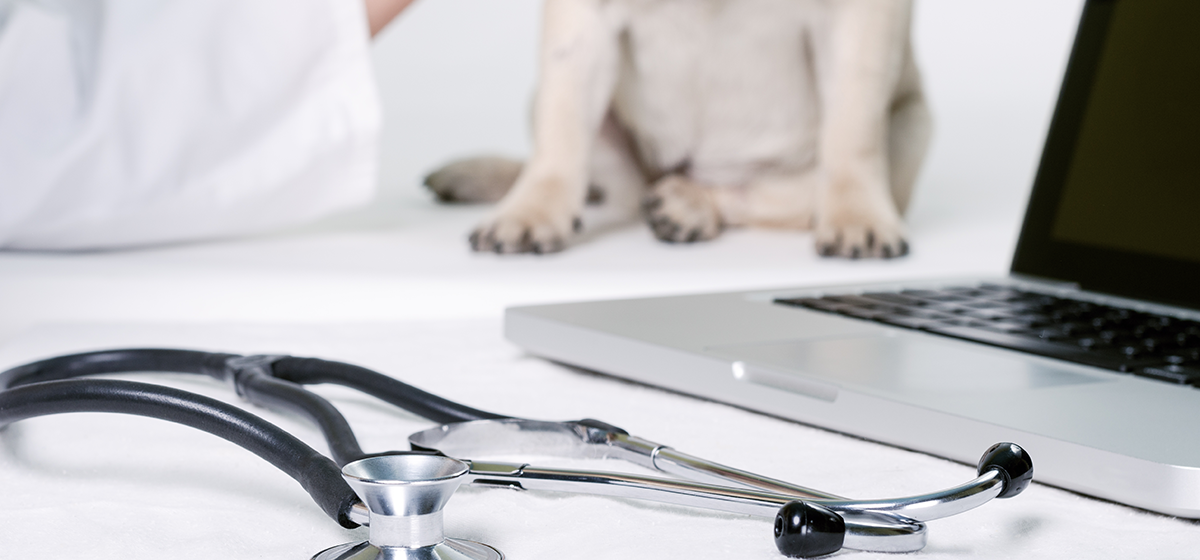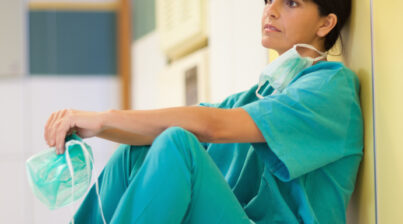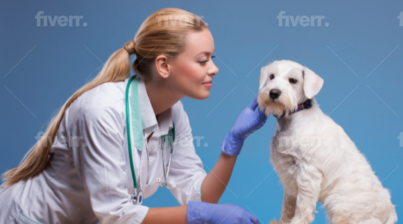A pet is just like a family member. Although you can likely judge the health of your pet from its physical outlook and behavior, a regular vet check-up is critical. In this way, you can find out if there is an internal or hidden issue associated with your puppy’s health. Moreover, as a person, you are as much of an expert in finding pet health problems as a veterinarian is. The specialist will help prevent health issues, as well as provide remedies for sorting out any problems that do arise.
Some people might think the first pet visit is the only important thing but that is just beginning. Every type of pet, whether newly born or old, needs a doctor check-up at regular intervals. A lot of people “when should I take my dog to the vet?” The answer is at regular intervals, normally once or twice a year.
In this article, we will be explaining the benefits of routine vet check-ups. We will also guide you about what should you expect to happen during your specialist visit, and give details on what is good or bad for your puppy’s health.
Content
- Why you need to go for your puppy’s regular vet check-up?
- What to expect on vet check-up visit?
- Essential Elements of a thorough Vet Visit
- When should I take my dog to the vet?
- When to go for emergency visits? – Emergency Symptom Checklist
Why you need to go for your puppy’s regular vet check-up?
A lot of people might think that only the first pet vet visit is critical. But you must understand that regular pet check-ups are necessary for a lot of reasons. Let us have a look at these:
General Pet Health and Growth
A pet undergoes various physical changes during its entire life. Apart from positive changes, you should be well aware of negative ones also. These negative mechanisms can have bad effects on general health and growth of your pet.
If you take your pet to a specialist regularly, he can diagnose any harmful changes during early stages. As a popular saying goes ‘prevention is better than cure’. This should be your mantra too.
You should try to notice your dog’s weight and body conditions. This will help you in assessing your pet’s physical health. As a companion, you obviously need your dog to be brisk.
In case your dog is overweight, your vet will suggest you exercise and diet plan for your dog. If you feel that your dog has lost considerable weight then a specialist can help you a great deal. On your check-up visit, he can provide you with a comprehensive weight gain plan for your pet. All these things come to your knowledge on your visit to a vet.
Dog Vaccinations
Bacteria and other germs are getting stronger as time goes on. To cope with and combat these bacteria and diseases, vaccinations are really important. Don’t bother about the question ‘when to take a puppy to the vet?’. Go and get schedule for vaccinations of your puppy to keep it safe and healthy.
Parasite Attacks
Control of bugs, ticks, and worms is very important. Recall that bugs can live all year in your home and nursery. These can cause dreadful sicknesses if they latch on to your puppy.
Your vet can help you to define a strategy to keep your pet safe from parasites. That’s why regular check-up visits are also important even after your puppy’s first visit.
General Dog Behavior and Psychological Analysis
As a caretaker of your pet friend, you should minutely watch your dog’s behavior. You should look for changes in barking, sleeping, eating and other habits. Please don’t take any behavioral change to be normal. It could be indicating minute to severe psychological/behavioral issues.
Regular visits to vet can assist you in finding out these behavioral changes. Your doctor can clearly inform you about the actual causes of changes in your dog’s behavior.
Most of these problems are progressive. As the time goes on treating such problems can be difficult. So give your vet a chance to detect and treat underlying causes of these problems as early as possible.
Updates on Nutritious Diet
Nutritious diet is very important for your dog’s health. A nutritious diet is not only important for proper growth of your puppy, but it can also assist your dog in fighting against various diseases. If you have an adult dog then they are probably properly nourished. When you have a puppy then choice of diet is really important for health and growth.
If the latter is the case then you should already be planning your puppy’s first doctor visit as early as possible. This is because your vet will give you detailed nutrition diet plan for your puppy.
As the age progresses, nutritional demands of your pet dog also change over the course of time. So, even after your first vet visit, regular follow up check-ups are necessary. This will allow you to get informed of the desired nutritional demands of your pet. In this way you can take great care of your dog’s health.
Dental Condition
Your vet will likewise have a decent take a look at your dog’s teeth to choose whether they need cleaning. Dental consideration is especially significant in more established dogs.
Dental sickness lead to various internal health issues. This dental check is likewise a decent time to talk about your home teeth and cleaning routine.
In case of your dog’s teeth your mantra, once again, should be “prevention is better than cure’. So don’t consult others on ‘when should I take my dog to the vet?’ Just stand up, dial your clinic and get an appointment.
What to expect on vet check-up visit?
With regards to looking at your dog, a hands-on assessment from your doc must be done reliably. Veterinarians are educated to play out an intensive physical assessment.
It pays to play out a careful test during each office visit. Sooner medical conditions are recognized better are the chances of recovery. Let me give you some details on components of your first pet vet visit in the coming section.
Essential Elements of a thorough Vet Visit
Recorded below are the parts of a total and intensive physical assessment of your dog. The specialist will be looking out different things. No matter whether you have taken your adult dog on a regular visit or you are one your puppy’s first vet visit. The rundown may look long, but it’s important to take care of all these things early on.
Assessing General Appearance and Alertness
First of all, a doctor will check your dog to assess appearance and alertness. He or she will try to judge whether dog responds to gestures, voice or any other such things or not. In both first pet check-up and regular check-up following things are observed:
- Inflammation. One of the first things in examining a dog’s appearance a vet tries to find out marks of inflammation. Inflammation is normally caused by bruises. But, in case of serious illness inflammation can significant health problems, including kidney failure, heart failure or liver failure.
- Skin assessment. In this assessment, the vet ensures that the fur is glossy and frugal in look or not. He also tries to find out patches with hair loss.
- Walking behavior. Vet may ask you to take your dog on a short walk for analyzing walking behavior. This can give him an idea of whether there is some sort of stiffness or muscle weakness associated with your dog’s legs or not.
Tip: It is good to always try yourself for the assessment of skin tone, hair loss, walking behavior and inflammation marks of your dog. These can be really helpful.
Essential Measurements
In the second phase of the check-up, the vet will perform a certain number of measurements. These measurements give a general idea of the health fitness of dog. Such measurements include:
- Weight & Body Condition Score (BCS)
- Heart rate
- Respiration rate
- Temperature
- Capillary refill time
Body Condition Score (BCS)
BCS is basically a scale measurement unit scaled from1 to 9. Each number represents the weight status of your dog. In order to evaluate BCS, the vet first weighs the dog in any suitable unit. After weight measurement, the vet then assigns BCS value according the weight. BCS is interpreted as follows:
- Your dog is in Ideal weight condition if BCS = 5
- Your dog is overweight if BCS > 5
- Your dog is underweight if BCS < 5 (1 to 4)
Heart Rate
Heart rate measurements can give vet a great idea of how well your dog’s heart is working to maintain blood flow. Heart rate value is measured in beats per minute (bpm) and this value depends upon physique of dog. Heart rate measurement is interpreted as:
- Normal range of heart rate is 60-120
- High heart rate > 120 indicate that heart has to beat more to pump blood to other parts of body
- Lower heart rate < 60 is also indication of some problem associated with heart
Tip: Although a normal range is 60-120, lower values even within the normal range indicate dog’s better health.
Respiration Rate
Your dog’s doctor estimates that how well the lungs are working from respiration rate. Respiration rate measures how many times a dog’s lungs are inhaling oxygen rich air and exhaling carbon dioxide. Ideally, the respiration rate should lie between 10-25 breaths per minute. Values that are not in this range can be a clear indicator of respiratory and pulmonary problems.
Temperature
Body temperature can give you a lot of indications regarding allergies, infections and other disease. Normally body temperature remains in between the range 101-102 Fahrenheit. Any value below or greater than this normal range clearly infers that there is some infection involved which is causing fever.
Capillary Refill Time
Number of seconds taken by the gum line to get pink after it has been bleached by finger pressure. Normal values lie in between 1-1.15 seconds. This can be good indicative of blood flow.
Monitoring and Assessing Essential Organs
This is extremely important assessment type. In this phase, various essential organs are monitored thoroughly. Normally following organs are monitored:
- Eyes, Ears and Nose
- Oral cavity
- Heart and lungs
- Abdomen palpation
- Lymph nodes
- Rectal exam
Eyes, Ears and Nose
Assessment of eyes, ears and nose is critical. These will be examined by the vet to find out whether signs of abnormalities are present or not.
A pet’s doctor will be using specialized instruments for this purpose. Because it is not possible to assess the condition with naked eye. So vet uses instruments to dig deep into eyes, ears and nose in the quest of any abnormal signs.
Oral Cavity
Again your dog’s vet will try to examine oral cavity of your dog. He will be looking for tongue texture, throat and teeth. This is because major source of bacteria enters our body via mouth.
So, this type of assessment is really necessary on vet check-up.
Heart and Lungs
A vet also attempts to hear your dog’s heart and lungs. This assessment is really very important. He will be using stethoscope and try to hear these organs from different sides of your pet. It can help in following ways:
- It can assist vet to find out about missing or abnormal heart beats. It is normally termed as ‘rhythm problem’ or ‘heart arrhythmia’
- The specialist can assess if there is any sort of chest infection associated with lungs or not
Tip: Always try your best to keep calm and silent during this type of assessment. It will help your vet to concentrate on heart/lung sounds rather than sounds of environment. If you avoid asking questions during this assessment, this will help vet a great deal.
Abdomen Palpation
This type of palpation are helpful. It can detect presence of cysts on skin or inside skin. Vet can diagnose blisters or cyst on your dog’s skin.
Lymph nodes
Lymph nodes are little organs that channel lymph, liquid and fluids courses through the lymphatic structure. They become swollen in light of infection and tumors. The lymph nodes act like a military border. At the point when microorganisms, infections, and strange or sick cells go through the lymph channels, they are stopped at the nodes.
Lymph nodes become swollen because of disease, contamination, or stress. Swollen lymph nodes or show that your body is fighting with infections. So even on your first vet visit, the pet’s doctor will try to feel swollen lymph nodes.
Rectal Exam
Rectum is another important area for the assessment of disease. A lot of bacteria can gather around there. In rectal exam, vet doctor will be looking for signs of:
- Tenderness
- Swelling
- Abnormality of Prostate gland
- Condition of stool
Blood and Urine Test
This is the last assessment technique used by vet. But it is decisive in nature. It is also termed as ‘Lab Work’. The specialist will suggest you a series of tests to find out the exact cause of disease. Sometimes only blood test are required. But sometimes urine work is also advised. Some common blood tests suggested are:
- Complete Blood Count (CBC)
- Liver Function Test (LFT)
- Kidney Function Test
- Thyroid and Hormone Levels
- Complete Urine Examination
These lab work measure quantities of certain chemicals in blood and urine. Each chemical has a normal range in our body. Any disturbance in actual normal range values shows some sort of problems.
When should I take my dog to the vet?
A lot of people ask about this question that when to take a puppy to the vet? The answer is simple but complicated. First of all, it depends upon whether you are taking about normal visits or emergency cases.
When to take a puppy to the vet normally?
If I talk about normal visits to the vet then there are two extremes in answering this question:
- People who are too much concerned and obsessed with their dog health
- People who are too much relaxed and doesn’t pay attention to importance of vet visits
Now if you ask a specialist, they might say that both these extremes are bad. For better care, you should consider regular check-up visits of your dog or puppy. For your convenience, you can make a routine of repeating this activity twice or thrice a year.
Tip: It would be very effective if you take your dog for vet visit at least quarterly i.e. four times a year.
When to go for emergency visits? – Emergency Symptom Checklist
Let us look on the other side of it and that is emergency condition. In such a case the answer would be quite different. First of all, you will have to judge by yourself of the appearance and symptoms of your pet. In case of following symptoms you need to rush fast:
- Breathing difficulty
- Restlessness and itchiness
- Weakness
- Trauma
- Urination problem
- Diarrhea
- Changes in eating and drinking habits
- Cough
- Lack of movement in one or more legs
- Lots of thirst
- Lack of physical activity
- Changes in eye color especially red
- Loss of weight
- Swallowing
- Bleeding from any part of body
- Unconsciousness
- Vomiting
Tip: Always have a strong observations about different life patterns of your dog. It will help you in judging whether your pet is good enough or not.
Conclusion
Dogs, puppies, and even cats are not only pets, but also family members and companions. Getting pets to play is not overly difficult but ensuring that your pet is physically healthy is sometimes challenging. For this vet check-up at regular intervals is really important. This is because ‘prevention is better than cure’.




